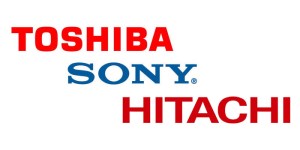
Hitachi, Sony, and Toshiba have announced an agreement (PDF) which will see them divest themselves of their small- and medium-sized LCD display businesses to a government-backed fund, with the result being a merged business called Japan Display K.K., due to be formalized early next year. The combined firm will be be 70 percent owned by the Japanese government-backed Innovation Network Corp. of Japan (INCJ).
“This is a landmark project for INCJ in our mission to make impactful, long-term and hands-on investments to grow next-generation businesses worldwide in the spirit of open innovation,” said INCJ president and CEO Kimikazu Noumi, in a statement. “The new company will become a leading small- and medium-sized display manufacturer, and by pooling compelling technological know-how, will be positioned to win in a competitive and lucrative global growth market that has a real impact on the quality of people’s everyday lives.”
The combined firm may well be the largest maker of LCD displays for products like mobile phones, cameras, media players, tablet devices, game systems, and even some notebook computers, and may help Japan’s LCD industry better compete against the like of Samsung and Taiwan’s Innolux. Funds from INCJ will be used to construct new production lines and hire external managers. Japan Display plans to eventually go public, eying an initial public offering by 2016.
According to DisplaySearch, Sony, Hitachi, and Toshiba together account for about 22 percent of the market for small- and medium-sized LCD displays, although both Sony and Hitachi are actually losing money on the business—Toshiba manages to staunch losses during its most recent fiscal quarter. Sharp—which is Japan’s largest maker of LCDs—plans to get into the small- and medium-sized display market seriously next month. South Korea’s Samsung has also just announced plans to cut back on TV-sized panel production to focus more effort on small- to medium-sized panels.
Japan Display K.K. marks the the largest venture launched by INCJ since it was founded in mid 2009. One of Japan’s response to several years of relative economic stagnation, INCJ can invest as much as 900 billion yen (about US $10 billion) from the Japanese government and private companies to foster innovation and jump-start new business growth.


